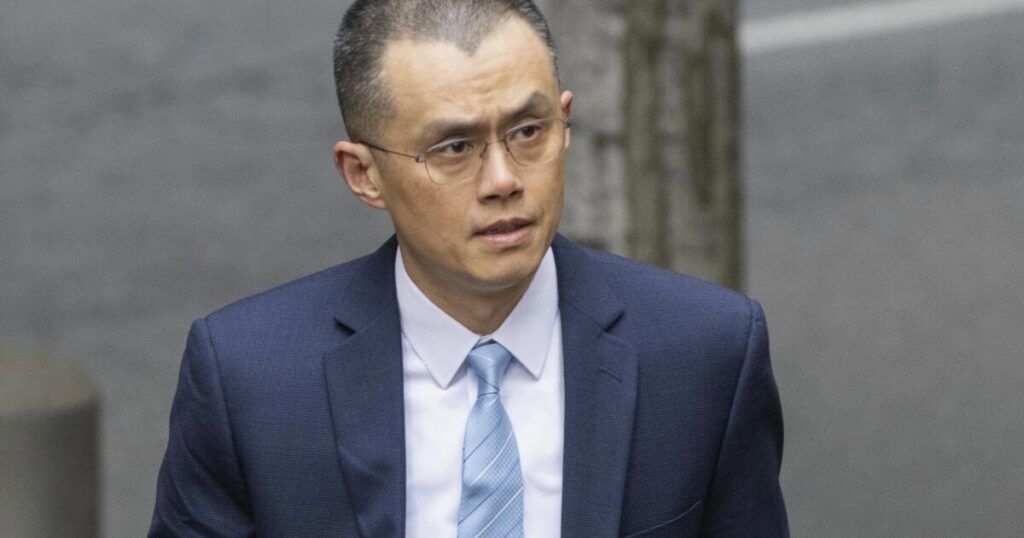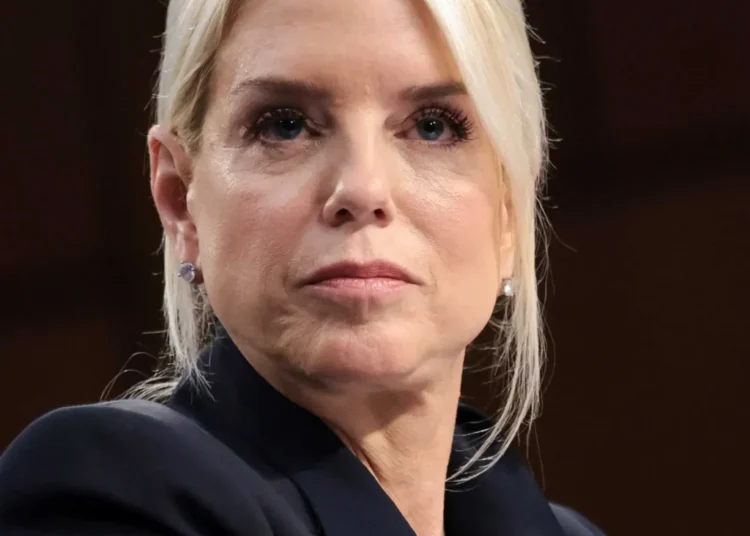With Donald Trump’s election as president, the cryptocurrency community saw blue skies ahead.
The election sent the price of bitcoin to a record high, exceeding $75,000. After all, during the campaign Trump had vowed to make the U.S. the “crypto capital of the planet” and to create a “strategic reserve” of bitcoin. He and his family members formed World Liberty Financial, a crypto trading firm.
Within three days of his inauguration, Trump issued an executive order promoting the expansion of crypto in the U.S. He denigrated enforcement efforts by the Biden administration as reflecting a “war on cryptocurrency.”
On the second day of his presidency, he pardoned Ross Ulbricht, the boss of a notorious online black market in which transactions were conducted in crypto. Ulbricht, who had become something of a hero to crypto promoters, was serving two life sentences at the time. In July, Trump signed the so-called GENIUS Act, which dilutes consumer banking protections involving stablecoins, a crypto token.
Last year, the FBI labeled crypto a hive of “pervasive” criminality. Under Trump, things are likely to get worse. Since Trump took office, the Securities and Exchange Commission has closed or deferred 18 cases or investigations related to cryptocurrency firms.
Yet despite all these tailwinds from the White House, federal agencies and a compliant Congress, cryptocurrencies are having one terrible year. The price of bitcoin closed at a record $124,752 on Oct. 10 but has since fallen to about $87,845. That’s a stomach-churning loss of almost 30% in just six weeks.
Since Trump’s Jan. 20 inauguration, bitcoin has lost more than 11% of its value. In the same period, the stock market, as measured by the Standard & Poor’s 500 index, has gained nearly 12%. To the question of who is getting rich on crypto in the Trump era, the answer thus far is: Trump, his family, and their friends. Everyone else has been taken to the woodshed.
Why has this happened?
To a certain extent, it’s a confluence of factors, not all of which can be blamed on Trump. But his economic policies, including his on-and-off-again tariff announcements, have certainly accounted for some of the notable crypto downdrafts of the last 11 months. Other geopolitical developments haven’t been friendly to crypto.
Another important factor is the growth of leverage in crypto accounts — users borrowing against their crypto holdings like stock investors buying on margin, a practice that can magnify gains in rising assets — but also magnify losses.
Let’s take a closer look at crypto’s terrible, horrible, no good, very bad year.
The first slap in the face with a wet fish came for crypto on Feb. 21. That’s when the crypto exchange Bybit, which is sometimes counted on the second-largest crypto exchange in the world, lost $1.5 billion in crypto tokens to hackers — “the largest cryptocurrency heist in history,” by the assessment of the Center for Strategic and International Studies, a Washington think tank. The FBI promptly traced the exploit to North Korea.
Trump can’t be blamed for the Bybit hack, but Trump’s weakening of America’s cyberdefenses doesn’t bode well for the future.
According to the Cyberspace Solarium Commission, a congressionally established body tasked with overseeing cyberdefense, Trump’s “cuts to cyber diplomacy and science programs and the absence of stable leadership at key agencies like the Cybersecurity and Infrastructure Agency (CISA), the State Department, and the Department of Commerce” have resulted in the country’s ability to protect against cyber threats “stalling and, in several areas, slipping.”
That’s especially important when it involved North Korea. According to many experts, the rogue state has made up for its exclusion from the global economy by creating an alarmingly effective cyberhacking program.
Since 2017, North Korean hackers have stolen more than $5 billion in cryptocurrencies, as calculated by the cybersecurity firm TRM Labs. The North Koreans have not only made their thievery more efficient, but have also refined their money-laundering techniques to the point that the stolen booty disappears into the dark reaches of cyberspace within days.
This has undermined the crypto camp’s claim to offer users secure access to their funds. Crypto’s reaction to Trump’s economic policies has undercut the promoters’ claim that their asset class is a remedy for economic turmoil in the outside world.
“Bitcoin and other crypto assets are once again demonstrating that they are among some of the first assets to decline among broader economic uncertainty,” the indispensable crypto observer Molly White wrote in March, after Trump’s tariff threats and fears of higher inflation provoked a three-day slide of 12.6% in bitcoin—the worst downdraft since the bankruptcy of FTX in 2022. Bitcoin fell nearly 10% in the four days after Trump announced his “reciprocal tariffs” on April 2.
Another selloff erupted on Oct. 10, the day Trump abruptly announced new tariffs on China. That day became labeled “crypto’s Black Friday,” as crypto exchanges forced the liquidation of some $19 billion in leveraged holdings in 24 hours. Bitcoin lost $10,000 in value in a matter of minutes.
As White observed, the downdraft was frenzied in part because the crypto market lacks the circuit breakers installed in the stock and bond markets, which automatically halt trading before a selloff can gain steam, allowing traders and market makers to catch their breath. Nothing like that stands in the way of a tsunami of account liquidations by thinly-regulated crypto brokers.
Since then, the selling has continued almost unabated. At midday Wednesday, bitcoin has recovered by about 2.8%, but it is still appreciably lower than its price on Jan. 1 or on Inauguration Day.
Market observers say that institutional investors as well as small retail investors all have been bailing on crypto. Over the last year, banks and other financial services firms have made it easier for small investors to buy crypto — exchange traded funds and firms that have constructed themselves as crypto treasuries have proliferated.
But those devices also make it easier to sell. Investors have withdrawn an estimated $3.5 billion from crypto ETFs so far this month. The publicly traded company Strategy, the business model of which is to accumulate bitcoin, has lost some 60% of its value since mid-July.
Historical patterns suggest that the chief victims of the crypto selloff are small investors, however. They tend to buy into a stock or other asset when it is rising, and sell into a bear market (just the opposite of the buy-low, sell-high principle favored by experts). To the extent they were lured by the runup in crypto prices, they may be holding the bag just now.
That points us to the likely winners in the current crypto cycle: Trump and his circle. Trump in 2021 called bitcoin a “scam,” and in 2019 posted that the values of cryptocurrency were “based on thin air,” but he “has now warmly embraced its supposed virtues,” as federal Judge Jed S. Rakoff, who has presided over lawsuits alleging crypto-related fraud, recently wrote.
Consider World Liberty Financial, which was co-founded by Trump and his offspring Eric, Barron and Don Jr. (Trump himself is listed by the company as “co-founder emeritus,” a designation he acquired upon taking office as president.)
World Liberty’s fortunes have benefited from reported actions by Binance, the largest crypto exchange in the world. Earlier this year, Binance accepted a $2-billion investment from an Abu Dhabi-based investment firm to be paid in USD1, the dollar-linked “stablecoin” marketed by World Liberty. The acceptance of USD1 as a crypto token has added to its value, and therefore to the financial gains enjoyed by the Trump family.
On Oct. 23, Trump pardoned Binance founder Chengpeng Zhao, who had served a four-month term in U.S. prison and was fined $50 million after pleading guilty to violations of U.S. anti-money laundering regulations. Binance also pleaded guilty and paid more than $4.3 billion in settling the criminal case.
Asked during a Nov. 2 interview on “60 Minutes” why he pardoned Zhao, Trump replied, “I know nothing about the guy, other than I hear he was a victim of weaponization by government. When you say the government, you’re talking about the Biden government.”
I asked the White House whether Trump’s involvement in crypto while he held authority over crypto regulations amounted to a conflict of interest.
I received an emailed response from Trump spokeswoman Karoline Leavitt, who wrote, “The media’s continued attempts to fabricate conflicts of interest are irresponsible and reinforce the public’s distrust in what they read. Neither the President nor his family have ever engaged, or will ever engage, in conflicts of interest.”
The truth is that bitcoin investors may have less to fear from Trump’s dabbling in crypto than in the shortcomings of crypto itself as an asset class. As I’ve reported before, unlike almost any other asset, crypto tokens are untethered from anything of concrete value. That doesn’t mean that crypto will periodically drive higher, only that when holders are running for the exits, there may not be a discernible floor to how low it will go.
Crypto tokens don’t throw off interest or dividends. Their prices aren’t based on even a theoretical value of issuing enterprises such as corporations, municipalities or federal agencies. As commodities, they resemble collectibles like Beanie Babies, with values derived from the “greater fool” theory — that someone is out there willing to pay more than your acquisition cost to take them off your hands. That’s a path painted in red.
The post Crypto promoters saw Trump as their savior. Then reality set in appeared first on Los Angeles Times.




